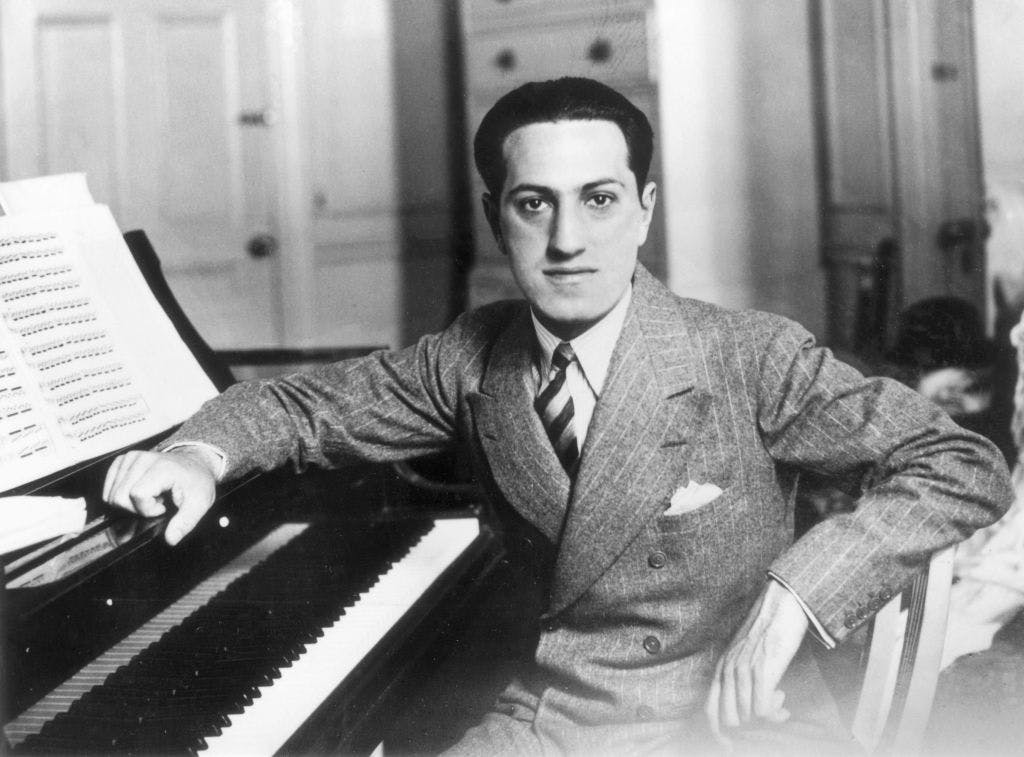Composed in 1924, George Gershwin’s ‘Rhapsody in Blue’ Stands Tall to This Day
‘Rhapsody’ has weathered everything that one could possibly throw at it — including harmonicas and now Bèla Fleck’s banjos — and has earned its celebrations.

Bèla Fleck
‘Rhapsody in Blue’
Béla Fleck Productions
The New York Pops Featuring Lee Musiker
‘Gershwin: A Century of Rhapsody in Blue’
Carnegie Hall, February 9
The Park Avenue Chamber Symphony
‘Centenary in Blue’
February 10
In 1924, when George Gershwin composed “Rhapsody in Blue,” virtually no one used the term “classical” music. The phrase that was then employed was “concert music.”
To most of America, there was dance music, being recorded by the carload by early big bands and already heard constantly on that new invention, commercial radio, and there was Broadway music. Yet anything that you listened to in a formal sit-down setting was a genre unto itself, whether it was the European symphonic repertoire or African-American spirituals.
“Rhapsody in Blue” is best described as a work of concert music, as distinct from the theater songs, and future jazz standards, for which Gershwin, who was all of 25 at the time, was already known. It’s safe to say that the composer intended it as a concert work that drew on elements of the European repertoire — at least one scholar has accused him of parroting Franz Liszt — as well as the nascent American forms like jazz, the blues, and syncopated popular dance music.
In the last 100 years, “Rhapsody” has become not only the best-known piece of American concert music, but one of the most recognizable instrumental themes of all time — surely it must tie with Beethoven’s Fifth Symphony and Mozart’s “Jupiter” for name recognition. For most of us, it inspires a warm familiar feeling of the kind that Ogden Nash described in his 1943 song, “That’s Him”: “You know the way you feel about ‘The Rhapsody in Blue.’”
I’m grateful to the pianist, composer, and essayist Ethan Iverson for a recent article in the New York Times that describes “Rhapsody” as “the worst masterpiece.” I don’t agree with a lot of his conclusions, but overall, it’s good that he makes us talk and think about “Rhapsody” in a different way. He makes the point that this first major concert work to incorporate at least the idea of jazz and blues was the most successful — it was so overwhelmingly so that it left nothing else for other composers to do after him.
It’s true: There were other jazz-inspired concert works in its wake, like Louis Alter’s “Manhattan Serenade” and Matty Malneck’s “Park Avenue Fantasy” — both of which are worth hearing and playing today — but nothing that had the anywhere near the impact and the staying power of “Rhapsody.”
Mr. Iverson quotes two young pianists, one jazz, Aaron Diehl, and the other classical, Timo Andres, and they both have valid things to say, though neither one actually comes out and directly knocks “Rhapsody.”
Conversely, the multi-generic banjo virtuoso Bela Fleck has a new recording out of “Rhapsody,” and in his notes he also quotes a legendary jazz musician, the late Chick Corea, and a giant of the classical keyboard world, Lang Lang. Clearly the three of them, including Mr. Fleck himself, are all major supporters of “Rhapsody.”
Mr. Iverson implies that it’s difficult to reinterpret “Rhapsody” in the same sense that Gershwin’s “I Got Rhythm” and “The Man I Love” are infinitely re-interpreted. Fair enough, but there have been no shortage of different rearrangements of the piece, including very stylish big band treatments by Duke Ellington and Glenn Miller, a snappy-peppy foxtrot version that is frequently performed by Vince Giordano and the Nighthawks, an Afro-Latin reinterpretation by Chucho Valdez, a very cinematic movie title-style orchestration by Henry Mancini, a postmodern jazz take by Charles Mingus, and harmonica interpretations by both Larry Adler and Borah Minevitch.
With his new album, Mr. Fleck gives us two worthwhile new adaptations: the second is more or less the Gershwin work as originally written, but with the famous piano parts performed by Mr. Fleck on banjo. Mr. Fleck plays the Gershwin score as close as possible — with the caveat, among other things, that the most one can possibly play on the banjo is three notes, versus 10 for the piano. Still, it’s a very full version, at 19 minutes long, unlike most of the the instrumental adaptations, which are generally truncated in some way.
Mr. Fleck’s other revision is more radical and at the same time, equally faithful. Titled “Rhapsody in Blue(grass),” it casts the themes of Gershwin in the idiom of Bill Monroe and Doc Watson. In this 11-minute treatment, Mr. Fleck not only steps into the role of the piano soloist, but opens the piece with the famous glissando, now on banjo rather than clarinet.
Still, Mr. Fleck and his band — violinist Michael Cleveland, bassist Mark Schatz, guitarist Bryan Sutton, and Justin Moses on dobro — adhere to the essential form of the work. They have fun with it, but they also take it seriously; it’s never a hillbilly-style parody like the vintage comedy team of Homer & Jethro.
The album also contains two additional, short instrumentals, “Rialto Ripples” (1916) and a previously unrecorded “Unidentified Piece for Banjo,” and there’s yet another revision of the centennial piece. This one is more of a full-out deconstruction, a shorter adaptation called “Rhapsody in Blues,” which focuses on the bluesier aspects of the main theme.
Even if Mr. Fleck’s project wasn’t as successful as it is, it still wouldn’t sink the venerable “Rhapsody in Blue,” which, for fully a century, has withstood everything that one could possibly throw at it — including harmonicas and now banjos. Mr. Iverson describes it as a “flawed classic,” yet even he admits it can stand up to anything, even criticism.

